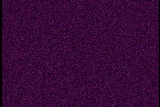维基百科 中的醫學内容
仅供参考 ,並
不能 視作專業意見。如需獲取醫療幫助或意見,请咨询专业人士。詳見
醫學聲明 。
視雪症 (visual snow syndrome,VSS)是一種會造成患者視野 中出現短暫或持久的電視機雪花般(持續閃爍的白色、黑色、透明或彩色圓點)的幻視 (visual hallucination)症狀[ 3] [ 4]
視雪症目前並沒發現特定病因 ,它可能是一種非特異性症狀,患有視雪症的人群也多夾帶其他症狀,如畏光 、夜盲 、眼極易疲勞、過於誇張的視覺後像、內視現象 (例如看見自己血管)、失眠症 、頭痛 。[ 5] [ 6] 飛蚊症 。視雪症情況通常一直存在,目前尚無已知的治癒方法,仍在研究中。[ 7] 偏頭痛 和耳鳴 是常見的合併症,都與更嚴重的視雪症表現有關。[ 8]
患許多眼科疾病患者都可能得視雪症,持久的視雪症是無梗塞之持續性預兆 [ 9]
多發性硬化 導致的視神經炎 及萊姆病 等其他疾病會可能會引發視雪症。患致幻剂持续性知觉障碍 者因為服用致幻劑也會產生視雪症[ 10]
除了視覺雪花之外,許多受影響的人還有其他類型的視覺障礙,如星芒(starburst)、後像 增加、飛蚊症 、軌跡(trails)等。 [ 11]
視雪可能代表不同嚴重程度的臨床連續性。偏頭痛和耳鳴等合併症的存在與更嚴重的視覺症狀有關。[ 12]
視雪症通常根據以下建議標準進行診斷:[ 13] [ 14] [ 15]
視雪:整個視野內出現動態、連續、微小的點,持續時間超過三個月。
這些點通常在白色背景上是黑色或灰色,在黑色背景上是灰色或白色;但是也可以是透明、閃爍的白色、彩色。 以下4類額外視覺症狀至少存在2種:
持續性後像(palinopsia):至少有以下一項:會看到移動物體的後像(afterimages)或軌跡(trails)。
增強的內視現象。 以下至少一項:雙眼的飛蚊症 嚴重、藍天內視現象 過多、眼睛自發光(光幻視 )或自發性閃光(閃光症
畏光 。夜盲症 ; 夜間視力受損。 症狀無法以其它種疾病(眼科疾病、藥物濫用)來更好地解釋。
可能會出現其他非視覺症狀,如耳鳴、耳壓或腦霧 等。 也可以通過 PET掃描 來診斷。
在2014年5月,第一个对视雪症的研究结果报道。这份研究从正电子发射计算机断层成像的实验提出了强有力的证据,认为这个疾病与脑部的右舌回 与左小脑前叶有联系。研究人员说指出视觉雪花(极其相关症状,比如滞后性影像)是大脑特定区域的功能问题会开启新的对症治疗的可能。相关治疗实验会随后开展。
視雪症並沒有規範的治療方法。針對致幻剂持续性知觉障碍導致的視雪症,氯硝西泮 是最有效的藥物[ 16] 乙酰唑胺 是治療反復視雪症的有效藥物[ 17] 丙戊酸 [ 18] 拉莫三嗪 [ 19] 托吡酯 [ 20] [ 21]
^ Brodsky, Michael C. Pediatric Neuro-Ophthalmology . Springer. 2016: 285 [2021-02-08 ] . ISBN 9781493933846存档 于2020-01-26) (英语) . ^ 3.0 3.1 Dodick, David; Silberstein, Stephen D. Migraine . Oxford University Press. 2016: 53. ISBN 9780199793617(英语) . 引用错误:带有name属性“Ox2016”的<ref>标签用不同内容定义了多次 ^ Bou Ghannam, A; Pelak, VS. Visual snow: a potential cortical hyperexcitability syndrome. Current Treatment Options in Neurology. March 2017, 19 (3): 9. PMID 28349350 S2CID 4829787 doi:10.1007/s11940-017-0448-3 ^ Visual snow syndrome - About the Disease - Genetic and Rare Diseases Information Center . rarediseases.info.nih.gov. [2022-10-30 ] . (原始内容存档 于2023-06-02) (英语) . ^ Puledda, Francesca; Schankin, Christoph; Goadsby, Peter J. Visual snow syndrome: A clinical and phenotypical description of 1,100 cases . Neurology. 2020-02-11, 94 (6): e564–e574 [2023-02-05 ] . ISSN 0028-3878 PMC 7136068 PMID 31941797 doi:10.1212/WNL.0000000000008909 存档 于2023-03-31) (英语) . ^ Schankin, CJ; Goadsby, PJ. Visual snow--persistent positive visual phenomenon distinct from migraine aura. Current Pain and Headache Reports. June 2015, 19 (6): 23. PMID 26021756 S2CID 6770765 doi:10.1007/s11916-015-0497-9 ^ Puledda, Francesca; Schankin, Christoph; Goadsby, Peter. Visual snow syndrome. A clinical and phenotypical description of 1,100 cases. (PDF) . Neurology. 2020, 94 (6): e564–e574 [2023-02-05 ] . PMC 7136068 PMID 31941797 doi:10.1212/WNL.0000000000008909 存档 (PDF) 于2023-04-29). ^ International Headache Society. The International Classification of Headache Disorders, 2nd edition. Cephalalgia 2004; 24 (suppl. 1): 1-160.
^ Abraham HD. Visual phenomenology of the LSD flashback. Arch Gen Psychiatry. 1983, 40 (8): 884–889. doi:10.1001/archpsyc.1983.01790070074009 ^ Podoll K, Dahlem M, Greene S. Persistent migraine aura symptoms aka visual snow. (archived Feb 8, 2012)
^ Puledda, Francesca; Schankin, Christoph; Goadsby, Peter. Visual snow syndrome. A clinical and phenotypical description of 1,100 cases. (PDF) . Neurology. 2020, 94 (6): e564–e574 [2023-02-05 ] . PMC 7136068 PMID 31941797 doi:10.1212/WNL.0000000000008909 存档 (PDF) 于2023-04-29). ^ Schankin, Christoph J.; Maniyar, Farooq H.; Digre, Kathleen B.; Goadsby, Peter J. ' Visual snow' – a disorder distinct from persistent migraine aura. Brain. 2014-03-18, 137 (5): 1419–1428. ISSN 1460-2156 PMID 24645145 doi:10.1093/brain/awu050 (英语) . ^ Headache Classification Committee of the International Headache Society (IHS) The International Classification of Headache Disorders, 3rd edition. Cephalalgia. 2018-01-25, 38 (1): 1–211. ISSN 0333-1024 PMID 29368949 doi:10.1177/0333102417738202 (英语) . ^ Puledda, Francesca; Schankin, Christoph; Goadsby, Peter. Visual snow syndrome. A clinical and phenotypical description of 1,100 cases. (PDF) . Neurology. 2020, 94 (6): e564–e574 [2023-02-05 ] . PMC 7136068 PMID 31941797 doi:10.1212/WNL.0000000000008909 存档 (PDF) 于2023-04-29). ^ Lerner AG, Kladman I, Kodesh A, Sigal M, Shufman E. LSD-induced Hallucinogen Persisting Perception Disorder treated with clonazepam: two case reports. Isr J Psychiatry Relat Sci 2001; 38: 133-136.
^ Haan J, Sluis P, Sluis LH, Ferrari MD. Acetazolamide treatment for migraine aura status. Neurology 2000; 55: 1588-1589.
^ Rothrock JF. Successful treatment of persistent migraine aura with divalproex sodium. Neurology 1997; 48: 261-262.
^ Chen WT, Fuh JL, Lu SR, Wang SJ. Persistent migrainous visual phenomena might be responsive to lamotrigine. Headache 2001; 41: 823-825.
^ Podoll K, Dahlem M, Greene S. Persistent migraine aura symptoms (e.g. visual snow) (页面存档备份 ,存于互联网档案馆 )
^ Rozen TD. Treatment of a prolonged migrainous aura with intravenous furosemide. Neurology 2000; 55: 732-733.
